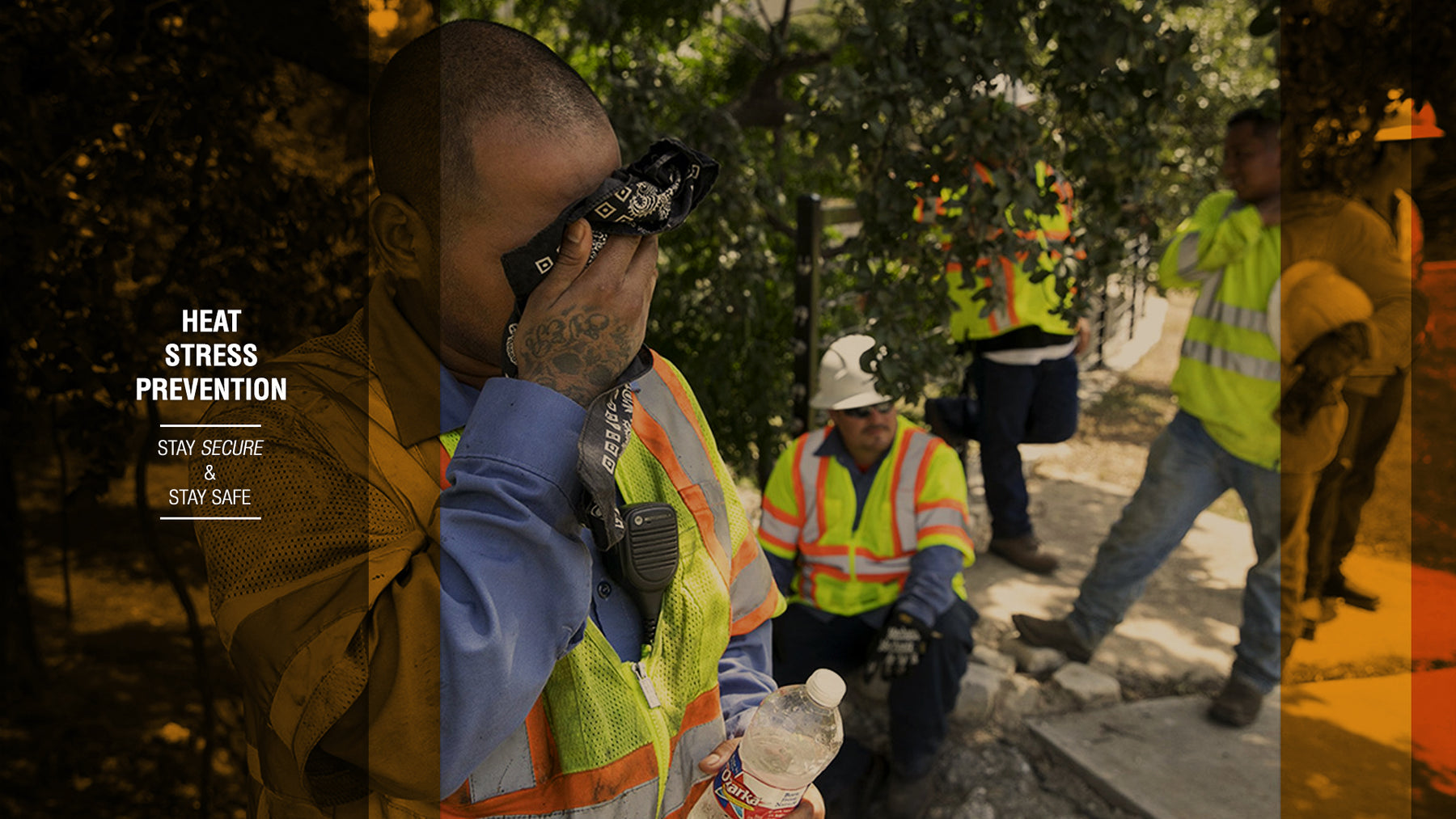Free Shipping | 30 Day Returns | Mix & Match Sitewide
Free Shipping | 30 Day Returns | Mix & Match Sitewide

In honor of Stress Awareness month, we here at KwikSafety are joining forces with the industry professionals across the country and bringing the latest information ways that you can not only keep your team safe but reduce stress in the workplace. Heat stress prevention is the topic of focus this week as heat -related illness is on the rise as the number of work-related deaths from exposure to environmental heat has steadily increased.
Heat stress is a catch-all term that includes symptoms and conditions caused by the body overheating. Heat-related illnesses include heat cramps, heat exhaustion, heat rash, or heat stroke, each with its own symptoms and treatments. Symptoms can range from profuse sweating to dizziness, cessation of sweating, and collapse.
As we transition into these next few months it's important to keep your team safe and be aware of heat stress prevention. OSHA released a statement that light-weight high-visibility clothing can serve as a lighter alternative to heavier vests and can help to keep your team cool. Cooling PPE, when worn correctly and when use instructions are followed, can reduce the surface of the skin temperature and aid in maintaining core body temperature. Cooling PPE should be worn on areas where there are large blood vessels located near the surface of the skin (neck, arms, and core).
For high heat indoor settings with limited airflow, or if an impermeable suit is worn, evaporative products are not ideal. In these work environments, a phase-change product should be worn. While there is weight with a phase change vest and it adds an additional layer, it is can also help reduce or maintain the core body temperature allowing for a safer work environment and increased productivity.
Employers should reduce workplace heat stress by implementing engineering and work practice controls.
Engineering controls might include those that:
Work practice recommendations include the following:

Studies indicate cooling PPE coverage on the body is directly correlated to its effectiveness. An example being a vest that covers the core is more effective at cooling the body than a towel or bandana on the neck. Our hi- visibility apparel is light-colored, breathable, loose fitting, and is built to last. The CDC emphasizes the need for appropriate clothing and further recommends that clothing can be soaked in water to aid in cooling. We design all of our products with worker's safety and health in mind, and we would definitely recommend these products for heat reduction PPE.
Make sure you have what you need by checking out our catalog of safety apparel and other PPE products.
If you have more questions, please visit our FAQ page.
Follow us on social media to stay up-to-date on new products and much more!
Leave a comment